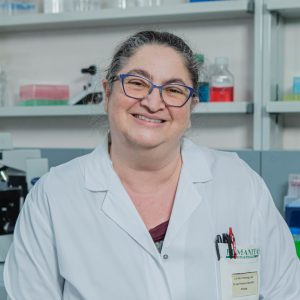Research Group
Costanzo Group
Skin Pathology Lab
Our group studies the molecular mechanism at the basis of immune-mediated cutaneous disease as Psoriasis, a chronic inflammatory, hyperproliferative skin disease, using the approach of epigenetic analysis and gene regulation technics to map key genes responsible of the onset of the skin hyperproliferation.
Main research areas
Epigenetic roadmap of keratinocytes and skin infiltrating lymphocytes in atopic dermatitis
In order to depict the epigenetic landscape of normal keratinocytes, that describe the enhancer repertoire of this type of cells discriminating between constitutive, poised and latent enhancer region, we perform ChIPseq analysis of Primary human epidermal keratinocytes with antibody against two key histone markers. The hypothesis is that drugs treatment could modulate the transcription activity of keratinocyte by changing the status of active enhancers or of latent enhancers. Simila experiments will be performed on T cells belonging to the inflammatory microenvironment of atopic skin. (IMMUNIVERSE project)
New strategies for diagnostic, therapeutic and clinical care in Skin immunological diseases
The aim of this project is to develop patentable methods based on genetic markers and functional assays to predict the response to biologics in psoriasis. Patients genotype will be correlated to clinical response to biological drugs to identify predictive markers and to characterize functional responses of T-lymphocytes to psoriasis autoantigen.
Optoacoustic and ultrasound technology for dermatology application
WINTHER EU HORIZON2020 project is driven by leading dermatologists (Prof. Costanzo and Prof. Biedermann in TUM Munich) and market leader SMEs in optoacoustic and ultrasound technology (iThera, Rayfos, Sonaxis), to design and prototype a handheld, portable, scalable, label-free F-RSOM device for point-of care dermatology applications, a photonic & ultrasound technologies that will improve the use of RSOM technology in dermatology suites for fast diagnosis and therapy monitoring in both skin disease and cardiovascular/metabolic diseases. RSOM can go beyond the abilities of current optical or optoacoustic devices and offer a paradigm shift in dermatology imaging.
Selected publications
Anti-LL37 Antibodies Are Present in Psoriatic Arthritis (PsA) Patients: New Biomarkers in PsA.
Red grape (Vitis vinifera L.) flavonoids down-regulate collagen type III expression after UV-A in primary human dermal blood endothelial cells.
Use of biological drugs in patients with psoriasis and psoriatic arthritis in Italy: Results from the PSONG survey.
Genetic counselling and high-penetrance susceptibility gene analysis reveal the novel CDKN2A p.D84V (c.251A>T) mutation in melanoma-prone families from Italy.
Disease-related and drug-induced skin manifestations in inflammatory bowel disease.
Antiproliferative Effects of 1α-OH-vitD(3) in Malignant Melanoma: Potential Therapeutic implications.
Suicide risk and psychiatric comorbidity in patients with psoriasis.
Label-free and non-invasive discrimination of HaCaT and melanoma cells in a co-culture model by hyperspectral confocal reflectance microscopy.
IL12B (p40) Gene Polymorphisms Contribute to Ustekinumab Response Prediction in Psoriasis.
Chromatin connectivity maps reveal dynamic promoter-enhancer long-range associations.
Diagnostic imaging: Listening in to skin disease
Sox2 is not required for melanomagenesis, melanoma growth and melanoma metastasis in vivo
Group members

